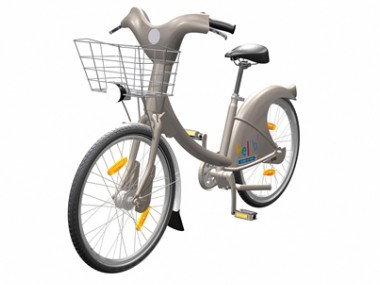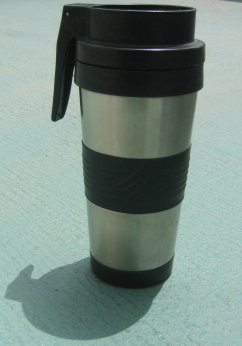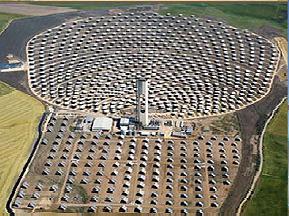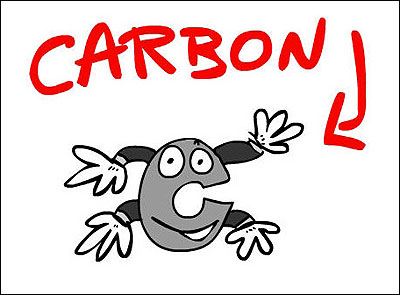[Updated with a bit of video!]
Earlier this week I went for a walk with Nick Halmagyi to chat about physics, and since he had not been down to the meadows and gardens over by the neighbouring Aspen Institute, we wandered down that way. It was just after lunchtime, and a very hot day, and as we got near the Institute, we diverted away from physics so that I could tell him briefly what the significance of the Aspen Institute is. I explained that it was an important “think tank”, host to thinkers in the humanities, sciences, and diplomats, presidents, ex-presidents, and other dignitaries, who come and think great thoughts about the problems of the world. Well, let me use their own words from their website:
The Aspen Institute, founded in 1950, is an international nonprofit organization dedicated to fostering enlightened leadership and open-minded dialogue.
As an example, I explained, it is probably the sort of place that Al Gore might have come to in order to think deeply about the environmental issues he champions. It is nice that the Aspen Institute is right next to the Aspen Center for Physics, and the two organizations, while now independent (but the Center actually grew out of the Institute, see here) sometimes work together on various matters including public outreach. The public lecture I gave here last year as part of the Heinz Pagels Memorial Lecture series (see e.g. here and here), for example, was actually over in the Paepke auditorium, one of their buildings.
We approached the main grounds of the Institute, near their residence buildings, and were greeted by a most frustrating -and ironic- sight. Their sprinkler system was fully on, spraying water unnecessarily into the air and onto the asphalted walks, with some making it onto their lawns, where even there it would mostly evaporate (in addition to aiding the hot sun in scorching the grass somewhat). For once, I did not have my camera and so cannot share this horrible sight with you. For a moment it was as though I was back in LA, but this was Aspen, where everyone talks about the environment. Then I remembered – everyone talks about the environment. At the same time, there are more and more SUVs every time I come here (rental companies even try to force SUVs on you when you try to rent a regular compact car – did you read my story of that last year?), more and more land seems to be cleared to build ever-larger houses, and so forth. On the other hand, bicycle use is very high here, there’s an excellent free bus system, an enforced reduction of individual car access to the Maroon Bells wilderness area, and I imagine several other worthy environmental efforts that I have not seen are being made. So it is a tale of two communities and mind sets. It’s complicated, as with any populate. But you’d have thought the Aspen Institute would be “fostering enlightened leadership” by not watering their lawns and (sidewalks) with vast amounts of water at the maximally worst time of day to do so in terms of effectiveness. (Frankly, given the environmental disaster most lawns are, one could go further and hope that in the spirit of leadership, they’d turn more of their expanse of lawns into other use, perhaps expanding the excellent wildflower garden they have in one corner, or letting more of the surrounding meadows repopulate the grounds. It could be rather beautiful.)

Anyway, we shook our heads at the irony of the sight and we wandered off toward the river, continuing our chat about matters in other dimensions (no, really). The next day I came back at that same time to check the sprinklers again (with camera), since such systems are often on timers, but had it rained very heavily the previous night and so -happily- it did not seem that the sprinklers had been used.
On Wednesday I returned once more. The sun was overhead and strong again (not as much as Monday) and the main system was not on. But once again I noticed signs of watering, and saw a smaller component of the lawn being watered by a hose-driven system. I now think that it might be that they were sprinkling (well, gushing) on Monday (and partly on Wednesday) in the mistaken belief that pouring water (and into the air, where it rapidly evaporates) on the lawn while the sun is baking it will somehow help, and they did it on an ad hoc basis, but I can’t be sure. Either way, it is a terrible waste of water resource by an organization that is committed to leadership in matters of importance, such as the environment.
Then I noticed that many people wearing name badges were heading from the Institute toward the direction of the auditorium and the Aspen Music tent. This fit with the next deliciously ironic thing: Al Gore was going to be talking! He’d been at the Aspen Institute (I’d no idea of his presence or the event until a radio announcement on Wednesday morning), and the sprinkler matter, this was remarkable. Convenient, one might say.
It turned out that it was not taking place in the Paepke auditorium, as I thought it […] Click to continue reading this post →
 So far. I forgot to point this out a couple of weeks ago. There was a nice story in the Guardian giving a one month update on the progress of the Velib program in Paris. Recall I blogged about its launch here, and expressed hope that the expectations that it would not work were wrong (I’m such an optimist). Well, the news is that it is working! The whole article (by Angelique Chrisafis) is here. A quote:
So far. I forgot to point this out a couple of weeks ago. There was a nice story in the Guardian giving a one month update on the progress of the Velib program in Paris. Recall I blogged about its launch here, and expressed hope that the expectations that it would not work were wrong (I’m such an optimist). Well, the news is that it is working! The whole article (by Angelique Chrisafis) is here. A quote:

 The Purple line right now is either two stops long, or several stops long depending upon how you count. (Click on map to right to see what I mean.) It’s effectively two, since all the other stops are Red line stops – it just runs two stops more to the West stopping a few long block away at Wilshire/Western
The Purple line right now is either two stops long, or several stops long depending upon how you count. (Click on map to right to see what I mean.) It’s effectively two, since all the other stops are Red line stops – it just runs two stops more to the West stopping a few long block away at Wilshire/Western
 From a shockingly* effective retrospective exhibit of the fluorescent light works of Dan Flavin, now on at LACMA. (The image on the right with a person next to a similarly-sized piece is to give you a sense of scale.)
From a shockingly* effective retrospective exhibit of the fluorescent light works of Dan Flavin, now on at LACMA. (The image on the right with a person next to a similarly-sized piece is to give you a sense of scale.)
 What was the matter? You’re possibly going to think that this is an insignificant matter, but I don’t agree. We all went for coffee to one the (usually excellent, with usually very good staff) cafes on campus, and as usual I brought along my own coffee cup. I do that a lot, primarily since it means that I do not use any paper cups as a result, and secondarily because it keeps the coffee warmer for longer, is close to spill-proof, and is much nicer to drink from. I’ve been doing this for years. The routine is usually this: I ask for a small coffee, they hand me a small coffee cup, I smile and say I already have a cup and hand it back, I pay for the coffee, and I pour myself a small coffee and leave. It’s not always in that order, but it is close enough.
What was the matter? You’re possibly going to think that this is an insignificant matter, but I don’t agree. We all went for coffee to one the (usually excellent, with usually very good staff) cafes on campus, and as usual I brought along my own coffee cup. I do that a lot, primarily since it means that I do not use any paper cups as a result, and secondarily because it keeps the coffee warmer for longer, is close to spill-proof, and is much nicer to drink from. I’ve been doing this for years. The routine is usually this: I ask for a small coffee, they hand me a small coffee cup, I smile and say I already have a cup and hand it back, I pay for the coffee, and I pour myself a small coffee and leave. It’s not always in that order, but it is close enough.

 NPR’s Robert Krulwich does it again. As part of a long special series that NPR has begun about carbon and climate change, he starts out with a really really good piece (with his usual level of humour and sound effects – and graphics on their website) on carbon. What is it with carbon that makes it such a special element to us, our biology, our planet? What is it about carbon that makes it so happy to stably bond into chains (storing energy), and so stably that we get huge reserves of energy stored underground in the form of fossil fuels (oil, etc). […]
NPR’s Robert Krulwich does it again. As part of a long special series that NPR has begun about carbon and climate change, he starts out with a really really good piece (with his usual level of humour and sound effects – and graphics on their website) on carbon. What is it with carbon that makes it such a special element to us, our biology, our planet? What is it about carbon that makes it so happy to stably bond into chains (storing energy), and so stably that we get huge reserves of energy stored underground in the form of fossil fuels (oil, etc). […] 

 I’ve been meaning to post about this for a few days*. It has since made it to rather high visibility in the news, I’m pleased to see, generating a lot of interesting discussion. The Australians (another nation not part of the original Kyoto agreement, notably) have pushed ahead on the issue of trying to legislatively encourage (shall we say) the use of compact fluorescent light bulbs over the more wasteful traditional incandescent bulbs.
I’ve been meaning to post about this for a few days*. It has since made it to rather high visibility in the news, I’m pleased to see, generating a lot of interesting discussion. The Australians (another nation not part of the original Kyoto agreement, notably) have pushed ahead on the issue of trying to legislatively encourage (shall we say) the use of compact fluorescent light bulbs over the more wasteful traditional incandescent bulbs.  As you may know, Al Gore’s movie
As you may know, Al Gore’s movie 
